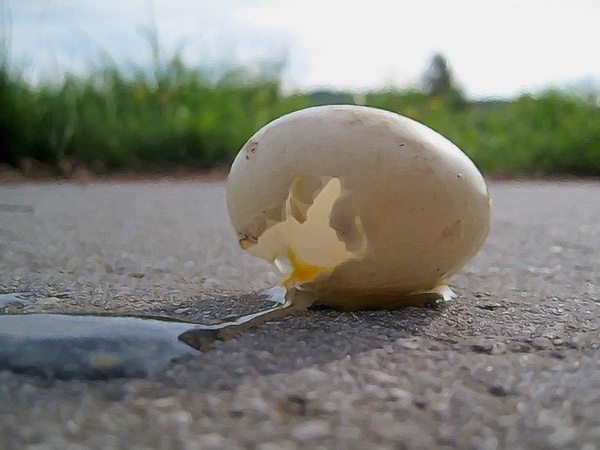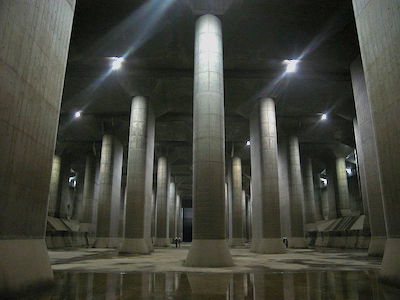Archives: Humans Speaking Animal

My good friend Jeff Mann, the true Yard Ramp Guy, has asked me to revisit some of my original posts. This week in my From the Archives series: Part 2 of talking to the animals.
Last time around, we looked at animals speaking human language. What about humans trying to speak animal language?
Well, somewhat embarrassingly—and other than some scientifically and ethically suspect experiments with dolphins back in the day—we really hadn't tried too hard until fairly recently. We're looking into it with a vengeance now, and we're coming up with some astonishing results.
First of all, we've got parrots (like Alex) in the wild. We've confirmed they have words for specific types of predators, foods, etc. The most fascinating thing we've found, though, is that they give each other names. Each parrot has a distinct name that remains throughout its entire life, given to it by its mother. That's…pretty astonishing.

I just scampered in from Jackson Hole, and man are my dogs tired.
Next, we have prairie dogs. (Not groundhogs, I know; I couldn't resist the title.) Prairie dogs live in huge underground communities, and scientist Con Slobodchikoff has been studying their vocalizations fairly intensely over the years.
He's confirmed they have a variety of different danger calls. Essentially, they have words for hawk, human, coyote, and even domesticated dogs. This is quite useful, since each threat demands different responses.
Here's where it gets crazy, though: Slobodchikoff tried sending people, dressed differently, through the prairie dog villages and eventually realized that prairie dogs had the words that actually described individual humans. He found that the prairie dogs could differentiate the color of the humans' shirts, as well as differentiate between different shapes on their shirts.
The prairie dogs could identify the difference between triangles and circles, but not circles and squares. The ability to use adjectives like this is far from one expected in a species of rodents.
There are quite a few more obviously intelligent animals in the world than prairie dogs. They’ve got to have even more language, right? (So long as they’re social and not solitary, at least.)
_________
Next time: Animal Intelligence and Language, Part 3: Whales, Elephants, and Dolphins
Yard Ramp Guy Blog: Selling Forklift Ramps on Craigslist
This week, the (real) Yard Ramp Guy takes us on a tour of Craigslist and its large equipment department. It ain't heavy. It's my yard ramp.
Read all about it HERE.

Archive: Animal Intelligence and Language

My good friend Jeff Mann, the true Yard Ramp Guy, has asked me to revisit some of my original posts. This week in my From the Archives series: Part 1 of talking to the animals.

Alex, Talking About Things
Part 1: Birds of a Feather
Ever heard of Alex the grey parrot? Alex could supposedly use language, though his owner, animal psychologist Irene Pepperberg, quite cautiously claimed he could use a “two-way communications code.”
That, you know, involved Alex understanding more than a hundred words.
He could identify more than fifty different objects (and could even tell you what color it was or what material it was made of), could count to six, and even knew how to apologize and when it was appropriate.
Alex could invent names for things (he called apples “banerrys,” presumably a combination of banana and cherry, which he was more familiar with).
Every night, as Pepperberg left the lab Alex lived in, he'd tell her, “You be good, see you tomorrow. I love you.”
They were the last words he ever spoke to her. He died in his sleep at age 31.
So why, exactly, did Pepperberg refuse to say Alex used language?
Well, it's because of linguists. Or, more precisely: the animal intelligence debate, and the role linguists and animal cognitive scientists play. The debate is a complicated, in-depth, challenging thing, and trying to summarize doesn't do it justice. But I’ll give it a shot.
Essentially: Animal cognitive scientists believe that animals might be capable of using language, while linguists don't. (There are, of course, dissidents on both sides, but those are roughly the camps.)
Alex the grey parrot is hardly alone as evidence for animals being able to speak language. Gorillas and other great apes, for example, have been taught to speak sign language. Dogs and many other domesticated animals can learn extensive commands in human languages, though how much is them actually understanding and how much is them just learning behavioral triggers is a point of massive contention.
All that being said, Alex is the only known animal to have been able to ask questions, so that somewhat leans things back toward the linguist side of the argument, outside of Alex himself.
Here's the tricky bit, though: all of the above are animals trying to speak human languages, not humans trying to understand animal languages.
_________
Next time: Animal Intelligence and Language, Part 2: Groundhog Day
Yard Ramp Guy Blog: Expert Insight
This week, the (real) Yard Ramp Guy honors the expertise of his manufacturers.
Read all about it HERE.

Archive: Egg Drop Reconsidered
Flooding you with Information

My good friend Jeff Mann, the true Yard Ramp Guy, has asked me to revisit some of my original posts. This week in my From the Archives series: don't count your eggs before they've, uh, broken.
The egg drop competition has been a staple of elementary and middle school science classes since long before I was born. You create a container that will allow an egg to survive a drop of several stories, while still being able to put the egg in the container on-site. It’s a good exercise in creative thinking for kids, not to mention the fun factor.

An Egg
You’ve got a few basic strategies: the first—and simplest—is the “giant wad of padding” strategy, which usually works pretty well. The most common version of this is the big box filled with packing peanuts, but I’ve also seen bags made out of pillows and bubble wrap spheres. (Natch: I made all my kids and grandkids think more “outside the box” than this.)
The next most common is the parachute design—usually one of the more reliable ones, assuming your parachute works. Pretty self explanatory…and it’s the design I used myself as a kid. (A little extra padding didn’t hurt, of course.)
There are also a ton of weirder designs out there: flexible chopstick frameworks surrounding a bubble-wrap core, eggs padded in breakfast cereal or popcorn, containers filled with water (although that’s banned in many competitions), the panty hose box (suspend the egg in panty-hose in a box, and the stretchiness of the fabric will keep it from hitting the sides and breaking), and the small padded box covered in springs.
Then, of course, you have my cousin John’s approach. He always was too smart for his own good, so he decided to come up with something a bit more unusual. When he showed up for school that day, it was with a container shaped like a rocket; the thing even had landing struts. It was even weighted so that the container always fell bottom-first. What he didn’t tell anyone, of course, was that the rocket was weighted with an actual radio controlled model rocket engine and had a thin paper coating over it.
When the teacher dropped his off the roof (all us kids standing below), John, who’d been hiding his remote in his pants, pulls it out to activate it. Unfortunately, it didn’t go quite as anticipated and shot off sideways toward the kids. Guess who it hit?
And that’s the story about how I got a broken rib, minor burns, and a face covered in egg. It wouldn’t be the first or the last time that hanging out with my cousin got me injured, either. At least that time I didn’t get in trouble for it.
Yard Ramp Guy Blog: Streamlined Steel
This week, the (real) Yard Ramp Guy highlights a very promising, cleaner future for the air we breathe.
Read all about it HERE.

Archive: Tokyo Gets Drained
Flooding you with Information

My good friend Jeff Mann, the true Yard Ramp Guy, has asked me to revisit some of my original posts. This week in my From the Archives series: Japanese floods. And earthquakes. And Godzilla. Oh, my.
 There's an enormous underground chamber just north of Tokyo. The Underground Temple—also known as the G-Cans Project, or the Metropolitan Area Outer Underground Discharge Channel—is a flood water diversion facility.
There's an enormous underground chamber just north of Tokyo. The Underground Temple—also known as the G-Cans Project, or the Metropolitan Area Outer Underground Discharge Channel—is a flood water diversion facility.
“Enormous” might be an understatement. It’s more than 25 meters high and 177 meters long. The concrete room is held up by 59 immense, 500-ton concrete pillars. In addition to the main chamber, there are five huge underground silos, each 65 meters deep and 32 m in diameter. You could quite literally fit Godzilla in one of those.
Construction on it began in 1992 and didn't complete until 2009. The whole thing is essentially the world's largest drain. The silos and the Temple are linked by hundreds of miles of underground pipes. The entire complex is nearly four miles across.
Tokyo has suffered from frequent floods throughout its history—not just from heavy rain, but also from typhoons and tornadoes. G-Cans was built to withstand even the most massive, once-every-other-century floods. Its 14,000 hp turbines and 78 pumps are capable of pumping more than 200 tons of water per second into the nearby Edogawa River.
 The architects and construction crew faced a number of major difficulties in the construction. Earthquake proofing was one of the biggest hurdles. Another: preventing buckling and sagging in the ground overhead as they dug out the complex; it is directly underneath a city, after all.
The architects and construction crew faced a number of major difficulties in the construction. Earthquake proofing was one of the biggest hurdles. Another: preventing buckling and sagging in the ground overhead as they dug out the complex; it is directly underneath a city, after all.
There was a little criticism about the steep price tag ($2 billion) and the fact that Tokyo already possessed significant flooding defenses. Still, given how prone to natural disasters the city is, I certainly think they made the right call.
So, they have the flood prevention thing covered. Of course, there are still earthquakes, volcanic eruptions, tsunamis, typhoons, Godzilla, and those horrifying giant Japanese hornets to worry about.
Yard Ramp Guy Blog: Streamline Through Turnkey
This week, the (real) Yard Ramp Guy is talkin' turnkey. And his customers are, apparently, gobbling it up.
Read all about it HERE.






